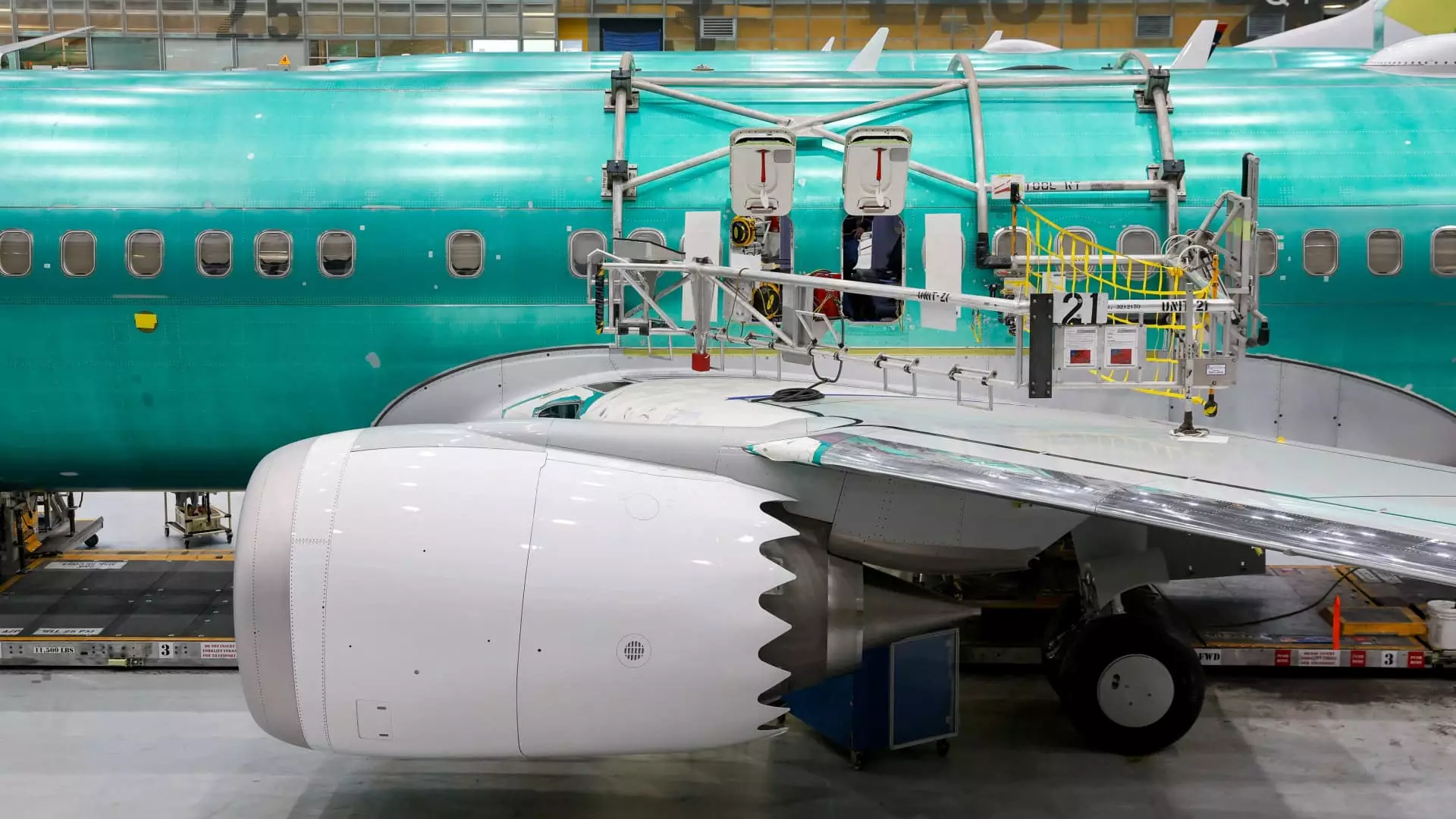Boeing, a distinguished name in the aerospace industry, finds itself at a crucial juncture as it endeavors to regain its standing among global manufacturers. Over the last year, the company has wrestled with numerous challenges related to safety, quality control, and leadership, particularly following a distressing incident that involved a nearly new Boeing 737 Max 9. As the eyes of the aviation world turn towards Boeing, the company is not just contemplating its growth trajectory but also reassessing its corporate culture to emphasize safety and quality over profit margins.
The incident in question occurred when a fuselage panel covering an unused emergency exit door dislodged mid-flight, creating a terrifying situation for passengers aboard an Alaska Airlines flight. Fortunately, no serious injuries were reported, and the aircraft made a safe emergency landing in Portland. However, investigations revealed that essential bolts were missing from the plane—an oversight that highlighted significant quality assurance failures at Boeing’s Renton factory. Such incidents have dramatically impacted the company’s reputation and its stock value, which has plummeted by over 30% over the past year, starkly contrasting with the positive performance of the S&P 500 during the same period.
In response to mounting criticisms and internal shortcomings, Boeing’s leadership underwent transformative changes. The appointment of Kelly Ortberg, a veteran in the aerospace sector, as the new CEO signifies a strategic pivot towards stability. Ortberg’s focus has been on initiating substantial reforms within the company, which includes implementing rigorous training programs for factory workers—many of whom are relatively new employees. Improving safety protocols and operational standards are paramount objectives. Under his stewardship, Boeing has commenced random quality audits across production facilities, aiming to promptly identify and address defects.
Enhancing Quality Control Measures
Boeing has publicly committed to rectifying its production flaws and has reported progress in its quality control endeavors. It has claimed a significant reduction in manufacturing defects of 737 fuselages sourced from Spirit AeroSystems, which Boeing is in the process of acquiring back. In a significant shift, the company has also prioritized eliminating “traveled work,” a phenomenon where tasks necessary for aircraft assembly are carried out out of sequence, leading to potential errors. Such fundamentals are crucial as Boeing works to restore trust among consumers and stakeholders amidst a backdrop of stringent oversight from the Federal Aviation Administration (FAA).
The FAA’s Rigorous Scrutiny: A New Reality
Since the aforementioned incident, FAA oversight of Boeing has intensified. Mike Whitaker, the FAA chief, has emphasized that increased scrutiny is a long-term fixture that the company must adapt to. His assertion that a fundamental cultural shift at Boeing is necessary underscores the critical need for a redefined approach centered on safety and reliability. This philosophy indicates a significant shift away from prioritizing profits at the expense of safeguarding operational integrity, a lesson learned with grave consequences after two fatal accidents involving the 737 Max model that resulted in over 300 fatalities.
Workforce Dynamics: Navigating Labor Challenges
The restructuring efforts coincided with labor disruptions as Boeing machinists staged a nearly two-month strike, advocating for better wages and working conditions. While the workers secured considerable wage increases through a new labor deal, they were left discontented regarding the absence of reinstated pensions. The strike had a notable impact on Boeing’s production schedule, but with factories now back online, the company is poised to focus on stabilizing its output while ramping up deliveries to clients who desperately need new aircraft, particularly as air travel rebounds post-pandemic.
Future Outlook: Is a Comprehensive Transformation Possible?
Boeing aims to emerge from its current difficulties with renewed vigor, but this requires more than just surface changes; it demands a systemic and cultural makeover. In a candid assessment, Ortberg has acknowledged that the company must “do less and do it better” to ensure future viability. With billions raised to bolster its financial standing, Boeing is under pressure to enhance production efficiency without sacrificing safety and quality. Airline executives express cautious optimism, hoping that under Ortberg’s guidance, Boeing will not just apply temporary fix-ups but will establish a robust framework for sustainable improvement.
As Boeing navigates the complexities of recovery, the focus must remain on fostering an enduring culture of accountability and safety. With external scrutiny now a permanent fixture and internal changes underway, the aviation giant stands at a crossroads. Success will hinge not just on restoring previous glory but on redefining what it means to lead in the aerospace sector. The coming months will be critical in determining whether Boeing can turn adversity into opportunity, ultimately reestablishing itself as the gold standard in aviation manufacturing.

